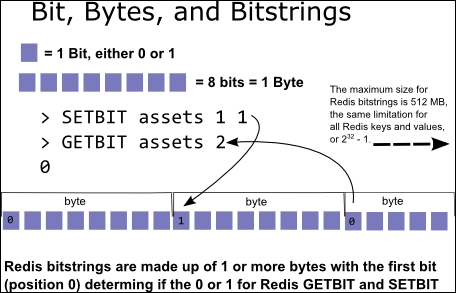Specialized uses of Redis strings with the corresponding commands allow for the use of memory-efficient data structures in Redis for a comparatively small number of bits, and depending on your use case and data, using sets or hashes would offer better performance. In bitstrings, 8 bits are stored per byte, with the first bit at position 0 being the significant one that is set to either 0 or 1. The maximum size for Redis bitstrings is 512 MB, the same limitation for all Redis keys and values.

One reason that makes a bitstring so efficient and fast is that most of its commands are the O(1) or O(n) operations. With SETBIT and GETBIT, bits are either set to 0 or 1 or the value retrieved by both O(1) operations and the use of a bitstring to store the binary information across a range of sequential values is extremely fast. For the BITOP, BITPOS, and BITCOUNT commands, the time complexity is O(n) but offers power semantics for using bitstrings.
A common use case for...



